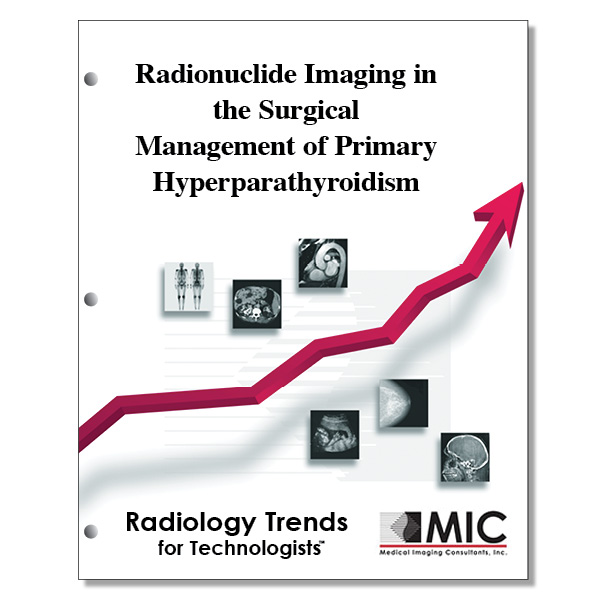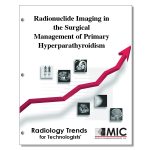

Radionuclide Imaging in the Surgical Management of Primary Hyperparathyroidism
This review emphasizes the importance of performing imaging before any surgery for primary hyperparathyroidism.
Course ID: Q00457 Category: Radiology Trends for Technologists Modalities: CT, Nuclear Medicine, PET2.5 |
Satisfaction Guarantee |
$29.00
- Targeted CE
- Outline
- Objectives
Targeted CE per ARRT’s Discipline, Category, and Subcategory classification:
[Note: Discipline-specific Targeted CE credits may be less than the total Category A credits approved for this course.]
Nuclear Medicine Technology: 2.00
Procedures: 2.00
Endocrine and Oncology Procedures: 2.00
Outline
- Introduction
- Usefulness of Preoperative Imaging Before Conventional Bilateral Surgery
- Positive Parathyroid Scans
- Negative Parathyroid Scans
- Advantages and Disadvantages of Targeted Surgery
- Performance of Different Scintigraphic Protocols to Guide Targeted Surgery
- Importance of Simultaneous Dual-Tracer Imaging
- The Role of Dual-Isotope SPECT/CT
- Multiphase 4-Dimensional (4D) CT Scanner
- Imaging Strategy Before Reoperation for Persistent or Recurrent Hyperparathyroidism
- Parathyroid Imaging with Novel PET Tracers
- Conclusion
Objectives
Upon completion of this course, students will:
- be familiar with the signs and symptoms of PHPT
- be familiar with the conditions found at PHPT diagnosis or during follow up that warrant surgical intervention in an asymptomatic patient
- know the type of PHPT with the most frequent occurrence
- know the number of parathyroid glands found in healthy patients
- identify the technological developments that have driven the shift towards targeted operations for PHPT
- know the role of ultrasound imaging in PHPT and how its effectiveness can be limited
- be familiar with the gene associated with menin production
- know the functions associated with the RET gene
- understand why preoperative imaging for PHPT is recommended even though bilateral cervical exploration is 92–95% curative
- know the location of ectopic parathyroid glands outside of the cervical area for a small percentage of PHPT patients
- be familiar with aspects of good preoperative imaging practice for PHPT patients
- be familiar with the benefits of PHPT preoperative imaging
- be familiar with the differences between superior (P4) and lower (P3) parathyroid gland ectopias
- understand the significance of negative parathyroid imaging results
- know the advantages of targeted parathyroidectomy
- know the details of the Miami criterion for intraoperative PTH monitoring
- be familiar with the disadvantages of intraoperative PTH monitoring
- be familiar with the four currently utilized criterion for intraoperative PTH monitoring
- know the qualities of a valuable presurgical imaging technique for PHPT
- understand the shortcomings of dual-phase, single-isotope 99mTc Sestamibi parathyroid imaging
- understand the reasoning for narrow energy window settings for dual-tracer, simultaneous acquisition parathyroid scintigraphy
- understand the advantages of dual-isotope subtraction simultaneous acquisition parathyroid studies
- be familiar with the patient preparation for dual-isotope parathyroid scintigraphy
- understand the roles of SPECT and pinhole imaging for the parathyroid glands
- be familiar with some of the disadvantages of 4D CT imaging of parathyroid
- be familiar with parathyroid adenoma contrast enhancement pattern
- know the first-line and confirmation imaging techniques before reoperation for persistent or recurrent hyperparathyroidism
- be familiar with the sensitivities of the modalities used to image persistent or recurrent hyperparathyroidism
- be familiar with the various PET isotope options for parathyroid imaging
- know the advantages and disadvantages of 18F-fluorocholine PET imaging for parathyroid
